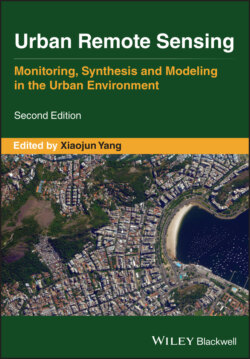Читать книгу Urban Remote Sensing - Группа авторов - Страница 34
2.4 RADIO DETECTION AND RANGING (RADAR) APPROACHES 2.4.1 BACKGROUND
ОглавлениеWith the capability to make Earth observations regardless of cloud cover and solar lighting conditions, radars have been successfully applied to Earth science studies and practical applications. Fundamentally, radar backscatter signatures are contributed by surface scattering such as from bare soil and bare ice, by a combination of surface and volume scattering such as from land surface with sparse and low vegetation cover, and by volume scattering such as from dense tropical forests (Ulaby et al. 1986; Tsang et al. 1985, and references therein). Specific to urban remote sensing, satellite radar data have been used to detect and observe urban characteristics in several cities (Henderson and Xia 1998; Dell'Acqua and Gamba 2006; Esch et al. 2009, 2017). Moreover, radars can delineate not only urban lateral extent in 2D but also building volume density in 3D (Nghiem et al. 2009; Mathews et al. 2019). The following subsections review the radar methodology applied to urban science research and applications.
